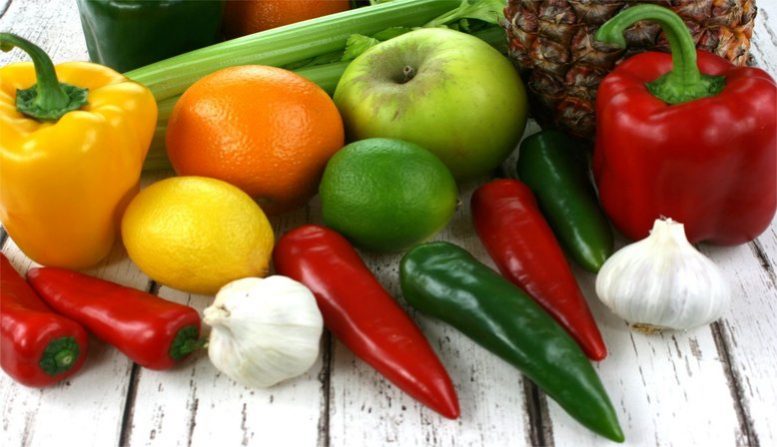Food Irradiation. What is it? Is it Safe?
Last Updated on February 22, 2023
Processing of food to increase shelf-life and reduction of foodborne illness by usage of ionizing radiation is called Food Irradiation, also known as cold pasteurization.
It is synonymous with any other food processing technique like Heating, Freezing, Canning or Pasteurization. Irradiated foods have been a matter misconstrued by the masses, due to lack of awareness.
Over 36 countries all over the globe have accepted processing of food by irradiation, for more than 50 food products. The first commercial food irradiation facility was opened in the USA in 1992.
The Need for Irradiation
Irradiation is an effective method of sterilization of food, method for decontamination of foods, which reduces the microbial load to a greater extent as compared to traditional food processing techniques like Heating and Freezing. Since the low microbial load is achieved, this helps in reduction of foodborne disease.
Agricultural products like fruits and vegetables are susceptible to damage by microbes, parasites, and insects; hence irradiation treatment would considerably increase their shelf life and lower huge losses caused due to the destruction of crops every year.
Myth Busters on Irradiated Foods
Let’s unravel the common misconception seeded in our minds about irradiated foods.
1) Irradiated foods are radioactive?
No, they don’t induce radioactivity on irradiation. Irradiation is performed on foods in their final package; hence radiation doesn’t come in direct contact with the food material.
The Food Irradiation facilities are recognized by the government bodies and it differs from a country. The ionizing radiations of Gamma rays (γ-rays) from Cobalt-60 and Caesium-137 [i] are employed in food irradiation for dosage of 0.1-1.33 Gy[ii]. The maximum irradiation dosage of 10 Gy is permitted by Codex Alimentarius Commission. Irradiated foods have a symbol that is universally called the Radur label (Image).
A statutory warning is issued by the government regulation body Do not irradiate again as radiating foods that are already irradiated caused free radical formation in foods, which is harmful for consumption to human health.
Fig: Radura symbol on irradiated food product
2) Irradiation leads to loss of nutritive content of food
Heat processing of food like Canning and Pasteurization leads to significant loss of vitamins and flavor components for instance, in the processing of milk; loss of volatile components has been reported by authors. Since Food Irradiation is also called cold pasteurization, due to low-temperature conditions subjected to the product; leaching of vitamins and loss of flavors and volatile components are insignificant.
3) Loss of flavor, color, and texture of food
Now talking about a common myth which associated changes in flavor and texture of irradiated foods; the ionizing radiations are not in direct contact with food hence, has no direct effect upon the texture, flavor, and color of food. Traditional food processing operations like Freezing causes textural change due to ice crystal formation, pasteurization at times causes browning in milk, which is undesirable. Such changes are seldom observed when food is irradiated.
The ionizing radiation has the substantial effect upon the microbes present in the package, as they damage their genetic material (DNA), and thus help in increased shelf and surface sterilization of food. Additionally, the regulations for the dosage of radiation varies depending upon the product and the application; <1 Gy used for sprout inhibition, 1-10 Gy elimination of pathogens, ripening delay, the shelf-life extension of foods.
So, Food Peeps….
In a nutshell, food irradiation is safe and makes our food safer for consumption. It may take some time for the masses to accept the idea of ionizing radiation treating food products, Canning a well-accepted operation today, took 50 years gain acceptance from the consumers.
Food Irradiation provides safer food, but that doesn’t imply we need not practice safe handling of the product since irradiation sterilizes the food. Products like Strawberry, Potato, and Onions, Meat are irradiated and provide better shelf life and sprout inhibition in cases of Onion and Potato.
References
- http://large.stanford.edu/courses/2014/ph241/eller2/
- https://www.four-h.purdue.edu/foods/Food%20irradiation.htm
- Sun-DW, Emerging Technology for Food Processing, Elsevier, 2005.
Authors: Debomitra Dey & Soniya Katekar
We are a team of two food tech grads now serving in the food processing industry, and working towards our undying passion for FOOD!!
The aim of building this platform is to reach out all food grads and professionals to create a network for bridging the gap between academics and the industry; consumers and the industry.
Our love for our job and passion is the result of The Food Tech Club Team, so let’s work together and inspire the world and fill in our inquisitive minds!! Shout out to the Food Tech Community!!
Subscribe to our newsletter for details on mentorship sessions, workshops, webinars, as well as career and job fairs across Canada and the US!



leave your comment